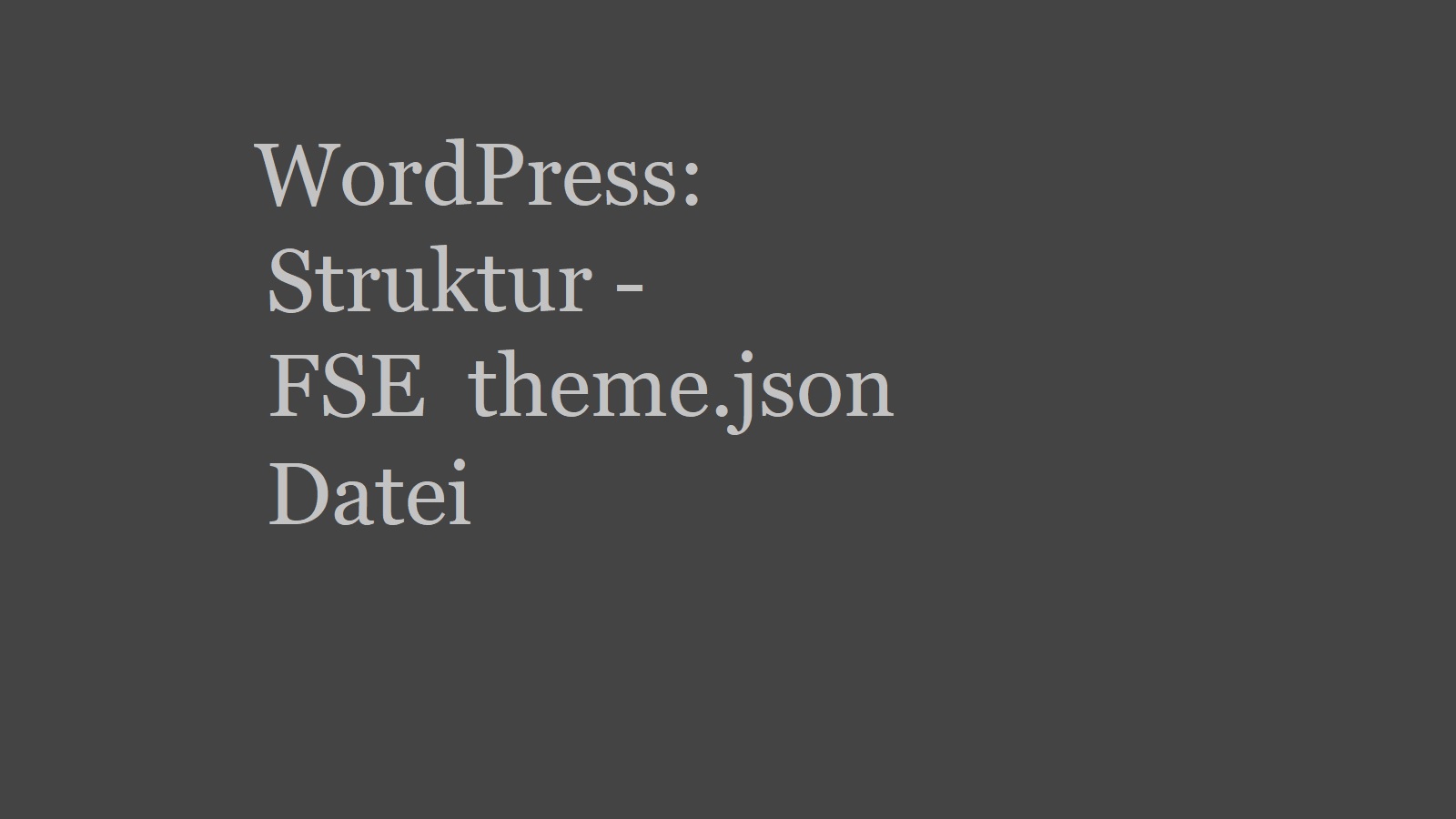Dieser Beitrag zeigt dir eine Sammlung zu der Entwicklung des Full Site Editing in WordPress, sowie der Struktur der FSE theme.json Datei.
Die experimental-theme.json Datei ist unterteilt in Sektionen, sogenannte “ contexts “ , welche einen unterschiedlichen CSS Selektor darstellen. Zum Beispiel: core/parapgrah weist auf > p, während core/group auf .wp-block-group weist. Hier weist ein Block auf einen Context.
Kirstin Schelper von den die-netzialisten hat „ context “ mit “ Bereich „übersetzt. Das lässt m.E. das Ganze noch leichter verstehn.
Es kann aber auch sein, das ein Block auf verschiedene CSS Selektoren weist, er generiert “ multiple contexts . “ Zum Beispiel generiert der Heading Block sechs verschiedene Contexts – core/heading/h2, core/heading/h2 usw. Einen für jeden Selektor ( h1, h2 usw.).
{
"global": { ... },
"core/paragraph": { ... },
"core/group": { ... },
"core/heading/h1": { ... },
"core/heading/h2": { ... },
"core/heading/h3": { ... },
"core/heading/h4": { ... },
"core/heading/h5": { ... },
"core/heading/h6": { ... }
}Jeder context/Bereich hat dieselbe Struktur und ist unterteilt in zwei Sektionen:
settingsstyles
Settings:
kontrollieren den Editor ( bestimmte Features an und abschalten z. B.), sie übernehmen das, was vorher über > add_theme_support erfolgt ist.
Styles:
Mit den Styles erstellt man neue Style Regeln, welche an ein neues Stylesheet angehängt werden > global-styles-inline-css, enqueued im Front End und Post Editor.
{
"some/context": {
"settings": {
"color": [ ... ],
"custom": [ ... ],
"spacing": [ ... ],
"typography": [ ... ]
},
"styles": {
"color": { ... },
"typography": { ... }
}
}
}Quelle: github– Themes & Block Editor: experimental theme.json
So sieht ein experimental-theme.json File aus
{"global": {"settings": {"custom": {"typo": {"rootSize": 16,"scale": 1.333}},"color": {"palette": [{"slug": "light","color": "#f5f7f9"},{"slug": "dark","color": "#000"}],"custom": false},"typography": {"fontSizes": [{"slug": "small","size": "calc(var(--wp--preset--font-size--normal) / var(--wp--custom--typo--scale))"},{"slug": "normal","size": "calc(var(--wp--custom--typo--root-size) * 1px)"},{"slug": "medium","size": "calc(var(--wp--preset--font-size--normal) * var(--wp--custom--typo--scale))"},{"slug": "large","size": "calc(var(--wp--preset--font-size--medium) * var(--wp--custom--typo--scale))"},{"slug": "huge","size": "calc(var(--wp--preset--font-size--large) * var(--wp--custom--typo--scale))"}],"customFontSize": false,"customLineHeight": true}},"styles": {"color": {"background": "var(--wp--preset--color--light)","text": "var(--wp--preset--color--dark)","link": "var(--wp--preset--color--dark)"}}},"core/paragraph": {"styles": {"typography": {"fontSize": "var(--wp--preset--font-size--normal)","lineHeight": "1.55"}}},"core/heading/h1": {"styles": {"typography": {"fontSize": "var(--wp--preset--font-size--huge)","lineHeight": "1.4"}}},"core/heading/h2": {"styles": {"typography": {"fontSize": "var(--wp--preset--font-size--large)","lineHeight": "1.4"}}},"core/heading/h3": {"styles": {"typography": {"fontSize": "var(--wp--preset--font-size--medium)","lineHeight": "1.55"}}},"core/heading/h4": {"styles": {"typography": {"fontSize": "var(--wp--preset--font-size--normal)","lineHeight": "1.55"}}},"core/heading/h5": {"styles": {"typography": {"fontSize": "var(--wp--preset--font-size--small)","lineHeight": "1.8"}}},"core/heading/h6": {"styles": {"typography": {"fontSize": "var(--wp--preset--font-size--small)","lineHeight": "1.8"}}}}
Quelle: make.wordpress.org -new structure for FSE theme.json Files, Ari Stathopoulos
Tools:
Theme.json Creator von Q
Tools like these will be what the development community needs as it gets over the inevitable hump of moving away from the traditional theme development paradigm and into a new era where themes are made almost entirely of blocks and a config file.
